

Nestled in the picturesque landscape of the East of England, Suffolk is a region that boasts not only breathtaking natural beauty but also a rich tapestry of historical significance. Among its most captivating treasures are the castles that dot its terrain—silent sentinels of the past that have stood the test of time. These structures, with their towering walls and imposing battlements, serve as a window into an era when they were pivotal to the defense, administration, and social life of the region.
Suffolk’s castles are more than just remnants of medieval architecture; they are storied monuments that encapsulate the tumultuous history, architectural evolution, and cultural heritage of the area. From their origins in the early medieval period, through their zenith in the Middle Ages, to their roles today as cherished heritage sites, these castles have played an integral role in shaping the identity of Suffolk.
This blog aims to take you on a journey through time, exploring the historical background of these fortifications, delving into the stories of major castles like Framlingham, Somerleyton Hall, Orford, Clare, Eye, and Bungay Castle. Each castle’s unique history, architectural highlights, and visitor information will be presented to enrich your understanding and appreciation of these historical sites.
Moreover, we will explore the ongoing efforts to conserve these symbols of Suffolk’s heritage, the impact of tourism on local communities and the preservation of these sites, and provide practical tips for those planning to visit. Whether you’re a history enthusiast, an architecture aficionado, or simply in search of a unique travel experience, Suffolk’s castles offer a compelling glimpse into England’s medieval past.
Join us as we uncover the mysteries of these ancient fortresses, celebrate their enduring legacy, and provide you with all the information you need to embark on your own castle exploration in Suffolk.
Historical Background of Castles in the Region
The story of Suffolk’s castles begins in the early medieval period, a time when England’s landscape was dotted with new fortifications following the Norman Conquest of 1066. These castles served as both offensive and defensive structures, symbols of Norman authority, and as centers for administration and control. Suffolk, with its strategic importance and fertile lands, saw the establishment of several significant fortifications that would play pivotal roles in the region’s history.
Early Constructions and Military Importance
The initial castles were primarily motte-and-bailey structures, consisting of a wooden or stone keep situated on a raised earthwork (motte) accompanied by an enclosed courtyard (bailey). These castles were quickly erected to secure the conquest’s gains, control local populations, and defend against potential Danish invasions. Over time, as the need for more durable and formidable structures became evident, these early castles were replaced or augmented by stone fortifications.
Architectural Evolution
The architectural evolution of Suffolk’s castles is a reflection of the advancements in military technology and changing strategic requirements. From the simple motte-and-bailey designs, Suffolk’s castles transformed into imposing stone fortresses. Features such as curtain walls, gatehouses, and towers became common, designed to withstand sieges and provide better living conditions for their inhabitants. This period saw the construction of iconic structures such as Framlingham Castle, known for its massive curtain wall, and Orford Castle, with its unique polygonal tower.
Socio-political Context
Beyond their military function, Suffolk’s castles were deeply intertwined with the socio-political fabric of the region. They were symbols of feudal power, serving as seats for the lords and barons who governed the surrounding lands. These castles became centers of local governance, justice, and economy, influencing the development of medieval society in Suffolk. The castles also played roles in national history, being involved in various historical events such as the Anarchy, the Wars of the Roses, and the English Civil War, reflecting the tumultuous history of England itself.
Decay and Restoration
The decline of Suffolk’s castles began in the post-medieval period, with many becoming obsolete due to advancements in military technology or changes in political and social structures. Some were abandoned or repurposed, while others fell into ruin. However, the fascination and appreciation for these medieval structures led to efforts to preserve them as historical and cultural monuments. Organizations like English Heritage and local heritage trusts have spearheaded conservation efforts, ensuring that these castles can be appreciated by future generations.
Major Castles in Suffolk:
Framlingham Castle
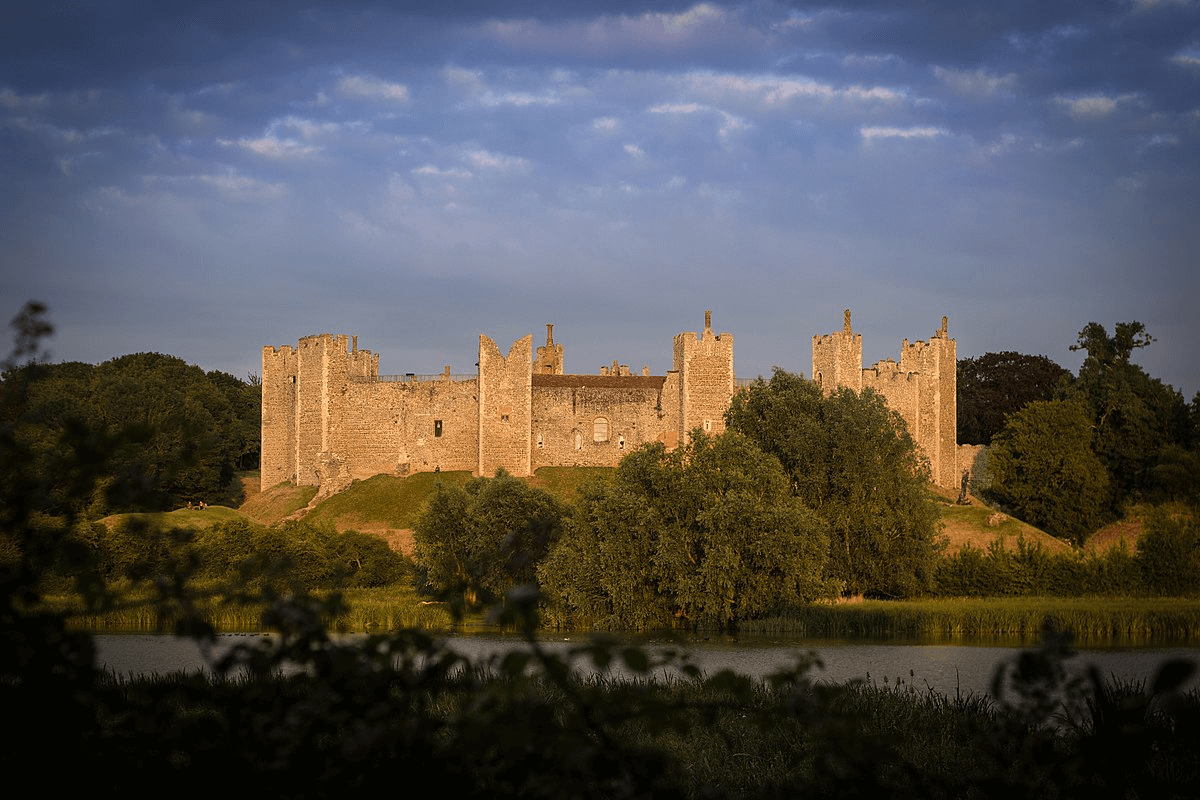
Brief History: Framlingham Castle stands as a monumental testament to the rich historical tapestry of Suffolk. Its origins trace back to the 12th century, built by Roger Bigod, a Norman baron and a key figure in the power dynamics of medieval England. The castle was born out of the turbulence following the Norman Conquest, serving both as a fortress and a symbol of feudal power. Over the centuries, Framlingham Castle has been at the heart of numerous historical episodes, including serving as a refuge for Mary Tudor before she was proclaimed Queen of England in 1553. Its walls have witnessed power struggles, royal intrigue, and significant historical shifts, making it an essential chapter in Suffolk’s medieval narrative.
Architectural Highlights: Framlingham Castle is renowned for its impressive 12th-century curtain wall, one of the best-preserved examples of its kind in England. The wall, punctuated by thirteen towers, encloses the inner court, offering a formidable defense mechanism and a striking architectural feature. Unlike many castles of its era, Framlingham lacks a central keep, with the curtain wall serving as the principal defensive structure. Inside, the castle boasts the remains of residential buildings, a chapel, and a hall, providing insights into the daily life and architectural innovations of the medieval period.
Visitor Information: Today, Framlingham Castle is managed by English Heritage and is open to the public, offering a fascinating journey into England’s medieval past. Visitors can walk the ramparts of the castle walls, enjoying panoramic views of the surrounding Suffolk countryside. The site also features an exhibition that explores the castle’s history, including its role in the Tudor period and its architectural evolution.
- Opening Hours: Vary seasonally, typically from 10 am to 6 pm during the summer months. Check the English Heritage website for current information.
- Admission Fees: There are admission fees for adults, children, families, and concessions. English Heritage members enjoy free entry.
- Facilities: The castle offers a gift shop, a café serving refreshments, and picnic areas. Accessible parking and toilets are available.
Framlingham Castle invites visitors to step back in time, offering a blend of historical exploration and architectural admiration. It stands not just as a monument of the past but as a continuing narrative of Suffolk’s rich heritage, preserved for future generations to explore and appreciate.
Photo Author Happy Bean Photography
Somerleyton Hall
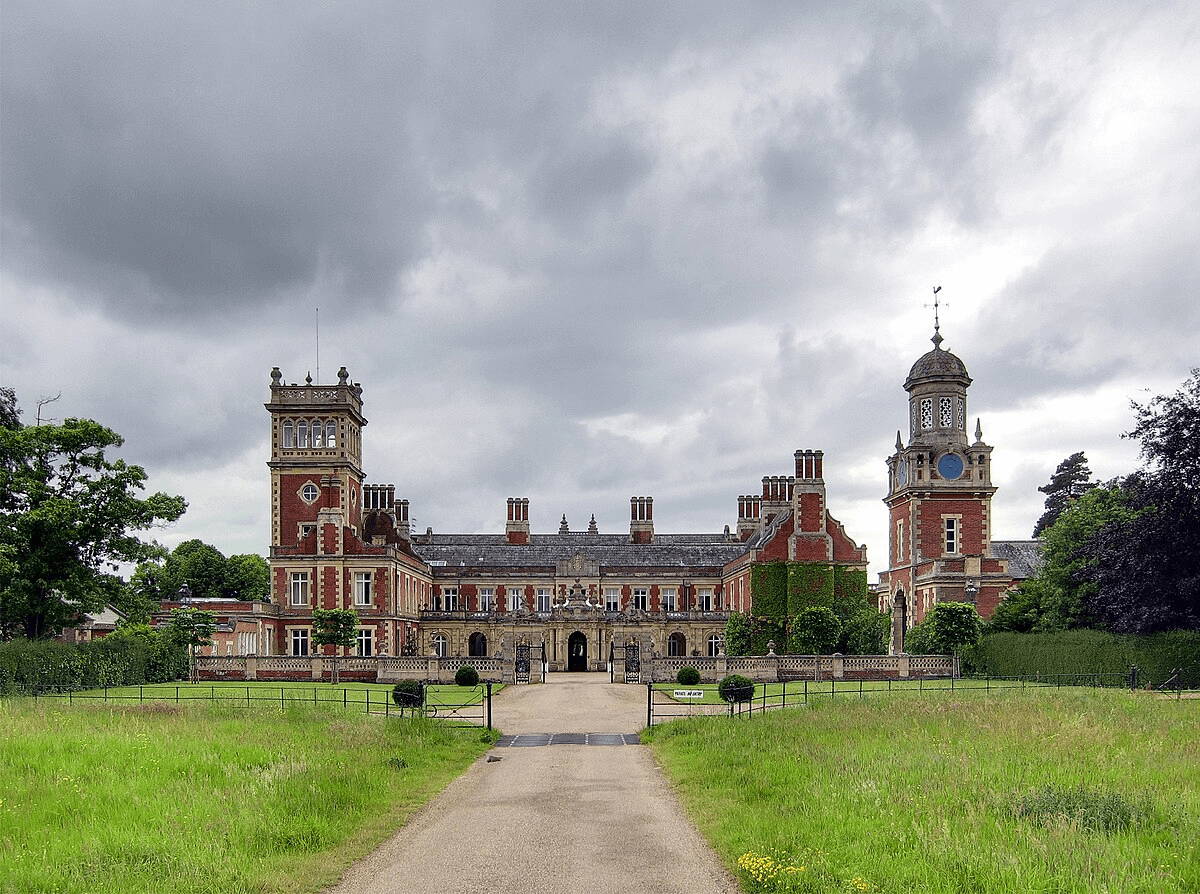
Brief History: Somerleyton Hall, while not a castle in the traditional sense of fortified military structures, is one of Suffolk’s most exquisite examples of Victorian grandeur and architectural innovation. The origins of the estate can be traced back to the Norman Conquest, with the property undergoing numerous transformations before arriving at its current state. The hall as it stands today was extensively rebuilt in the mid-19th century by Sir Morton Peto, a renowned industrialist and Member of Parliament. The estate encapsulates the evolution of English domestic architecture, transitioning from a medieval manor house to a stunning example of Victorian style, embodying the era’s technological advancements and aesthetic sensibilities.
Architectural Highlights: Somerleyton Hall is celebrated for its exquisite Victorian architecture, characterized by detailed brickwork, ornate stonework, and elaborate wood carvings. The hall’s design reflects the opulence of the Victorian era, with lavish interiors, a grand staircase, and impressive reception rooms that showcase the craftsmanship and artistic achievements of the period. The gardens are an integral part of the Somerleyton experience, designed by renowned landscape architect William Andrews Nesfield, featuring manicured lawns, a maze, and a variety of thematic gardens.
Visitor Information: Somerleyton Hall and its gardens are open to the public, providing a unique opportunity to experience the splendor of Victorian England amidst the tranquility of Suffolk’s countryside.
- Opening Hours: The hall and gardens have specific opening days and hours, typically from April to September. It is advisable to check the official Somerleyton Hall website for the most current visiting information.
- Admission Fees: Entry fees apply for access to the hall and gardens, with different rates for adults, children, and families. Season passes and group rates may also be available.
- Facilities: The estate offers a range of amenities, including guided tours of the hall, a gift shop, and a tearoom serving light refreshments. Visitor parking and accessible facilities are provided.
Somerleyton Hall invites visitors to immerse themselves in the elegance and opulence of the Victorian era, surrounded by breathtaking gardens and rich historical narratives. It stands as a testament to the architectural and cultural evolution of Suffolk, offering a glimpse into the past with the comforts and insights of the present.
Photo Author Velvet
Orford Castle
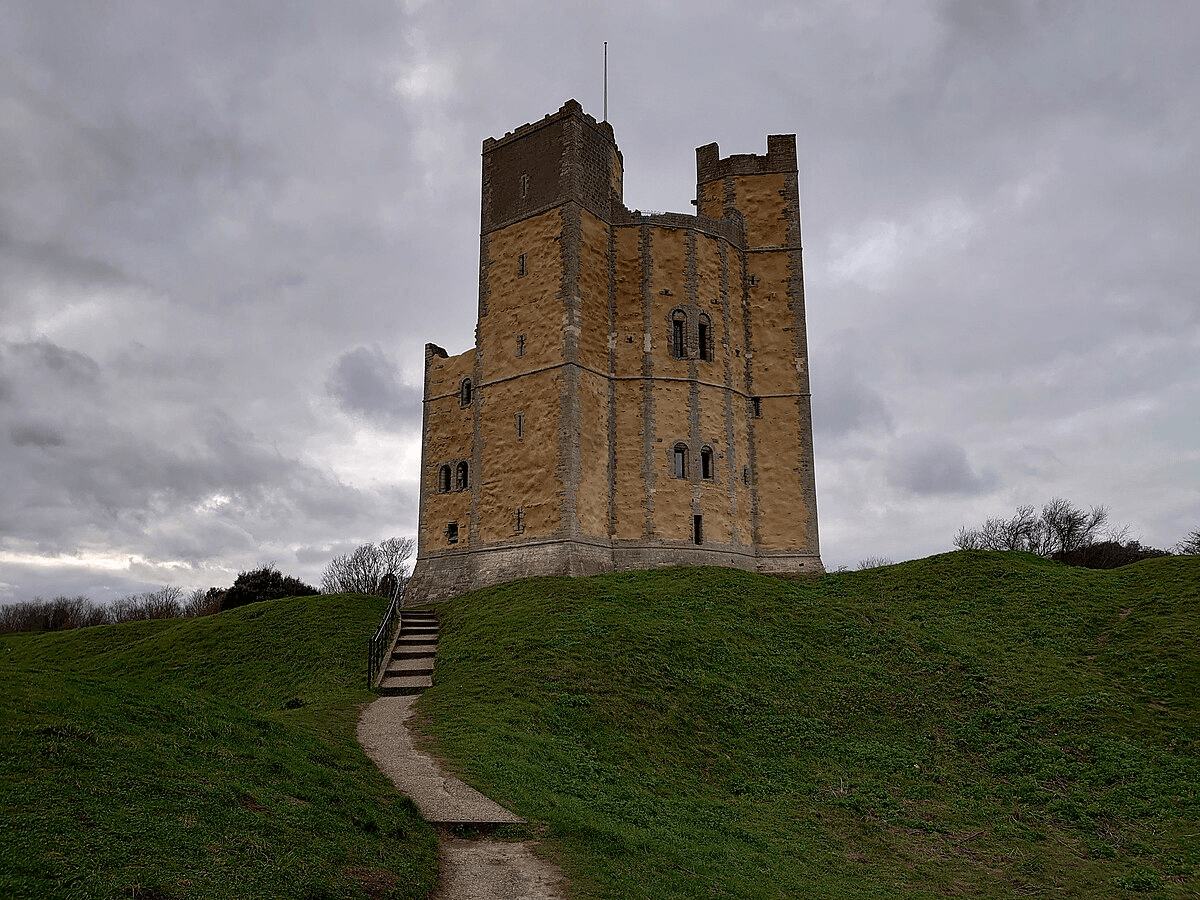
Brief History: Orford Castle stands as a remarkable example of medieval military architecture and the complex history of Suffolk’s coastal defense. Constructed between 1165 and 1173 under the orders of Henry II, the castle was built to consolidate royal power in the region and guard against potential invasions from the Continent. Orford Castle’s history is marked by its strategic significance, serving not just as a fortress but also as a symbol of royal authority and a center of local governance. Its unique design and enduring presence offer insights into the medieval period’s political, military, and architectural advancements.
Architectural Highlights: Orford Castle is distinguished by its unusual design, featuring a central keep with a unique polygonal shape, unlike the more common round or square keeps found in other English castles. This 12-sided keep is flanked by three turrets, which provided robust defense capabilities and a commanding view of the surrounding area. The interior of the keep contains a well-preserved layout of rooms, including a chapel, hall, and chambers, arranged over several floors. The castle’s design reflects both the defensive needs of the period and the technological innovations in castle construction.
Visitor Information: Orford Castle is managed by English Heritage and welcomes visitors keen to explore its architectural wonders and delve into its storied past.
- Opening Hours: The castle’s opening hours vary by season, typically open from spring through autumn. Visitors are encouraged to check the English Heritage website for the most up-to-date information.
- Admission Fees: Entrance fees are charged, with different rates for adults, children, families, and concessions. English Heritage members can visit for free.
- Facilities: Visitors can enjoy guided tours that bring the history of Orford Castle to life, along with access to exhibits that showcase artifacts found within the castle and its surroundings. The site also offers a gift shop, and although there are no catering facilities on site, the village of Orford offers a variety of dining options.
Orford Castle provides a unique window into the medieval era, offering visitors the chance to explore one of England’s most fascinating architectural and historical sites. Its preservation and presentation by English Heritage allow for a deep dive into the life, strategies, and architectural innovations of the time.
Photo Author Richard Nevell
Clare Castle
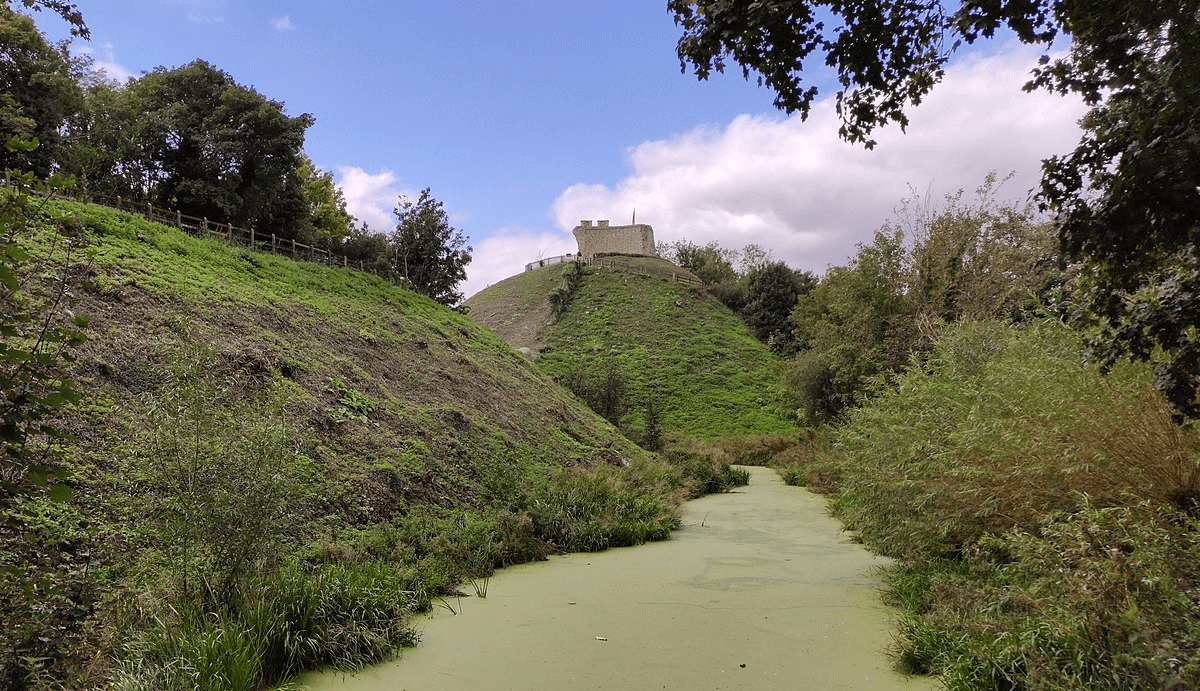
Brief History
Clare Castle, located in the charming market town of Clare, is a site steeped in history and natural beauty. This Norman castle dates back to the 11th century and was built by Richard Fitz Gilbert, a member of the Norman aristocracy who played a significant role in the conquest of England. Throughout the centuries, Clare Castle served not only as a military fortress but also as a noble residence and a symbol of the town’s economic and political importance. Its strategic location on a high mound overlooking the town of Clare made it a pivotal point of control and defense in the region.
Architectural Highlights
The most striking feature of Clare Castle is its motte, a large earthen mound that elevates the castle ruins high above the surrounding landscape, offering panoramic views of the Suffolk countryside. Although much of the original structure has succumbed to time, the motte-and-bailey design is still evident, with the ruins of the stone keep atop the motte and fragments of the bailey walls visible. The site reflects the evolution of castle architecture over the centuries, transitioning from wooden fortifications to stone structures.
Visitor Information
Clare Castle is now part of Clare Castle Country Park, a public space that combines historical exploration with natural beauty. The park offers a unique opportunity to enjoy Suffolk’s heritage in a serene and picturesque setting.
- Opening Hours: Clare Castle Country Park is open to the public year-round, with unrestricted access during daylight hours.
- Admission Fees: Entry to Clare Castle Country Park and the castle ruins is free, making it an accessible option for visitors of all ages to explore Suffolk’s historical and natural heritage.
- Facilities: The country park features walking trails, a railway station exhibition that celebrates the town’s Victorian railway heritage, and a café. It’s a perfect spot for picnics, leisurely walks, and educational outings.
Clare Castle, with its historical ruins set amidst a beautiful country park, offers visitors a blend of Suffolk’s rich history and its splendid natural environment. It remains a testament to the region’s medieval past, inviting exploration and discovery.
Photo Author Sumitsurai
Eye Castle
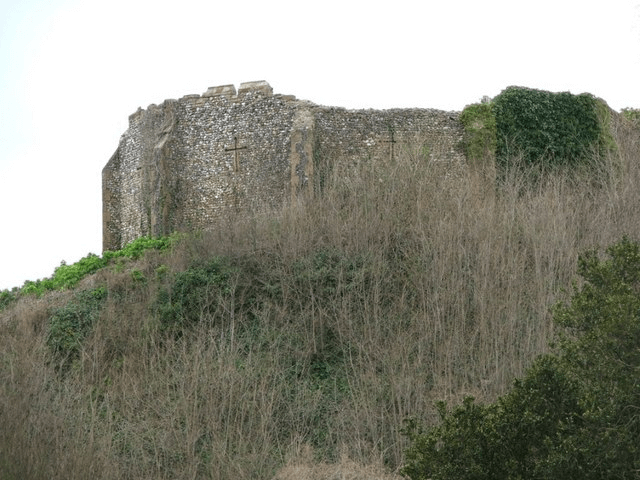
Brief History: Eye Castle, towering above the small market town of Eye in Suffolk, is a historic site with origins dating back to the Norman conquest. Constructed shortly after 1066 by William Malet, one of William the Conqueror’s closest allies, the castle played a crucial role in the early Norman control and defence of the region. Throughout its history, Eye Castle has witnessed numerous renovations and changes in ownership, reflecting the turbulent and evolving landscape of medieval England. Despite facing decay and partial destruction over the centuries, the castle’s remnants continue to offer insights into Norman military architecture and feudal life.
Architectural Highlights: The most prominent feature of Eye Castle is the motte, or large earthen mound, which supports the remnants of the Norman keep. This elevated position provided strategic advantages in surveillance and defence, typical of motte-and-bailey castles of the period. Although the original wooden structures have long since vanished, the stone ruins of the keep and portions of the curtain wall still stand, offering a glimpse into the castle’s formidable past. The site’s layout showcases the adaptability of Norman fortifications, incorporating natural landscape features into its defensive strategy.
Visitor Information: Eye Castle is a heritage site that welcomes visitors interested in exploring the architectural remnants and enjoying panoramic views of the surrounding Suffolk countryside.
- Opening Hours: The castle grounds are generally accessible to the public throughout the year, but it’s wise to check local listings for any specific visiting hours or events.
- Admission Fees: Access to Eye Castle is usually free, making it an attractive option for history enthusiasts and casual visitors alike.
- Facilities: While the castle itself offers limited facilities, the town of Eye provides a range of amenities, including dining, shopping, and parking. The castle’s location in the heart of Eye makes it an easy addition to a day exploring the town.
Eye Castle serves as a tangible connection to England’s Norman past, offering visitors the chance to step back in time and experience the historical landscape of Suffolk. Its ruins stand as a reminder of the region’s rich heritage, inviting exploration and reflection.
Photo Attribution David Barnes / Eye – Castle / CC BY-SA 2.0
Bungay Castle
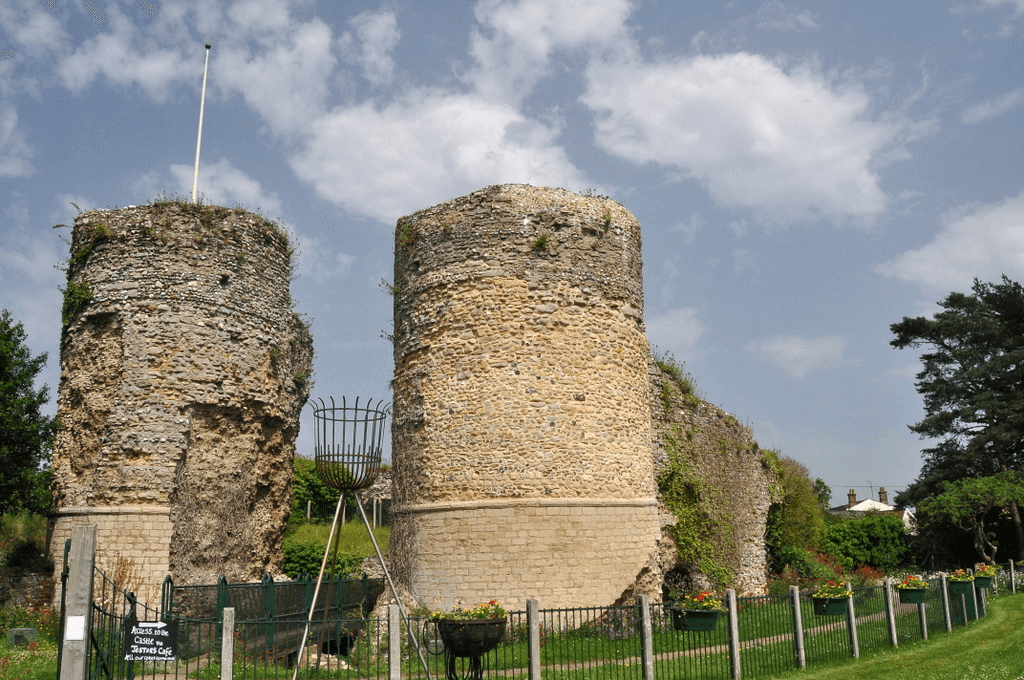
Brief History: Bungay Castle, nestled in the heart of the market town of Bungay in Suffolk, bears the marks of a storied past that spans several centuries. Originally constructed in the 12th century by Roger Bigod, a prominent Norman nobleman and Earl of Norfolk, the castle served as a symbol of feudal power and a strategic military stronghold. Throughout its history, Bungay Castle has experienced periods of significant reconstruction, notably under the auspices of the Bigod family, who were instrumental in its expansion and fortification in the late medieval period. Despite suffering from neglect and subsequent decay over the years, the ruins of Bungay Castle today offer a fascinating glimpse into England’s medieval heritage and architectural prowess.
Architectural Highlights: The ruins of Bungay Castle provide insight into the architectural innovations and strategic design characteristic of medieval fortifications. Key features include the remnants of the massive curtain walls that once enclosed the castle complex, offering formidable defense against invaders. The gatehouse, partially intact, stands as a testament to the castle’s grandeur, showcasing the typical Norman architectural elements such as robust stone construction and arched gateways. Although much of the original structure has been lost to time, the existing ruins stimulate the imagination, conjuring images of the castle’s former splendor.
Visitor Information: Bungay Castle is a historic site open to the public, offering a unique opportunity to explore the remnants of medieval architecture and ponder the lives of those who once inhabited this fortress.
- Opening Hours: The castle ruins are accessible throughout the year, with no specific restrictions on visiting hours, making it a convenient site for visitors to explore at their leisure.
- Admission Fees: Entrance to Bungay Castle is free, inviting a wide audience of history buffs, architecture enthusiasts, and casual explorers to discover its charms without a financial barrier.
- Facilities: While direct facilities at the castle are minimal, the surrounding town of Bungay offers a range of amenities, including shops, cafes, and parking. The castle’s central location within the town ensures easy access to these services.
Bungay Castle stands as a beacon of Suffolk’s medieval past, inviting visitors to step back in time and experience the historical depth and architectural beauty of the region. As a site of historical significance and a reminder of the past’s enduring presence, the castle enriches the cultural landscape of Suffolk, offering an invaluable glimpse into England’s rich heritage.
Photo Author Scott Anderson from UK
Conservation and Tourism
The castles of Suffolk, with their rich history and architectural grandeur, are not only symbols of the region’s past but also key drivers of its present-day tourism. The conservation of these historical sites is crucial, not only for preserving Suffolk’s heritage but also for sustaining the local economy through tourism. This dual role of conservation and tourism presents both opportunities and challenges, requiring a balanced approach to ensure the longevity of these historic structures while making them accessible and engaging for visitors.
Preservation Efforts
Conservation efforts for Suffolk’s castles are multifaceted, involving restoration projects, archaeological research, and public engagement initiatives. Organizations like English Heritage, alongside local heritage trusts and community groups, play a pivotal role in these efforts. Restoration projects often focus on stabilizing ruins, conserving architectural features, and restoring accessible parts of the castles for educational purposes. Archaeological research contributes to our understanding of the castles’ historical contexts, uncovering new information about medieval life, construction techniques, and historical events associated with these sites. Public engagement initiatives, including educational programs, volunteer opportunities, and events, aim to foster a sense of ownership and responsibility within the community, ensuring that conservation is a shared effort.
Economic and Cultural Impact of Tourism
Tourism related to Suffolk’s castles provides a significant boost to the local economy, attracting visitors from across the UK and internationally. These historic sites are not just attractions; they are catalysts for regional development, supporting local businesses, creating jobs, and promoting the broader cultural and natural attractions of Suffolk. However, the economic benefits of tourism must be balanced with the need to preserve the integrity and authenticity of the castles. This includes managing visitor numbers to prevent wear and tear on the structures, providing accurate and engaging information to educate visitors about the sites’ significance, and ensuring that tourism development respects the historical and environmental context of each castle.
Challenges and Solutions
One of the main challenges in balancing conservation and tourism is the potential for damage to the historic sites due to increased foot traffic and the general wear and tear associated with public access. Solutions include implementing sustainable tourism practices, such as controlling visitor numbers through ticketing and timed entries, developing virtual tour options to reduce physical impact, and investing in infrastructure improvements that enhance accessibility while protecting the sites’ integrity.
Another challenge is securing funding for ongoing conservation efforts. Solutions here involve a mix of public funding, private donations, and revenue generated from tourism activities. Creative approaches, such as adopting a castle or sponsorship programs, can also provide additional support for conservation projects.
Conclusion
The conservation of Suffolk’s castles and the management of tourism are intertwined efforts that require careful planning, community involvement, and sustainable practices. By addressing the challenges and leveraging the opportunities presented by tourism, Suffolk can ensure that its historic castles continue to be appreciated and explored by future generations, contributing to the region’s cultural heritage and economic vitality.

